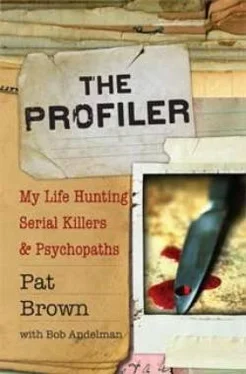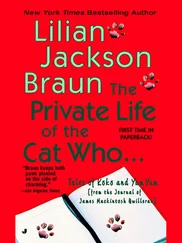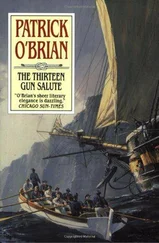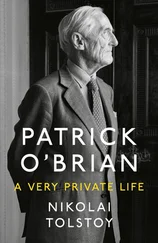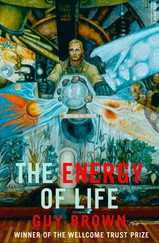Of course, sometimes crime scenes change, developers plow through them with a bulldozer, and then it’s gone, it doesn’t look anything like it did before, and then I do have to rely on the pictures.
But I learn a lot in person. I can interview people, and I can do a lot more because I can get the feel for everything. It’s not always economically reasonable to do so, in which case I have to rely on the photos and reports and hope that they will be good enough to do the case justice.
Working pro bono, as I always do (unless I am working for a defense attorney-and they don’t like me that much so it is a rare event), the family is not paying for my expenses or anything else.
In this case, the Conway family said, “We think that Jimmy was murdered. We don’t think it was self-defense, we think his friend shot him in cold blood.” They wanted me to look over the case and sent me the files, which they had because the case was closed. (If the case remains open, the family usually gets nothing.) I had access to all the photos of the crime scene and all the details in the police reports, so I could review the case quite thoroughly, even from a distance.
THE CONWAY FAMILY provided me with a solid amount of information, although the photos from the scene were lousy.
But one of the lousiest held the key.
It was one of those off-the-cuff pictures that people take. The police arrived, took a quick picture of the dead man at the scene, and it turned out to be the most valuable piece of evidence in the case file. It was a Polaroid photo that contained a blood spatter evidence pattern that convinced me that Jimmy’s “friend,” Earl White, was lying.
* * * *
THIS VALUABLE OPPORTUNITY early in my career taught me the importance of photography.
When a murder is fresh, the police sometimes make snap decisions at the scene as to what they think the case is about.
In another Minnesota case, in 1998, a young man was found hanging in his bedroom. Gregg Meissner’s death was ruled a suicide at the scene and the police took no fingerprints off objects in the room. They didn’t even seal off the scene because, as they told Gregg’s mother, “This isn’t television.” The detective on the case actually allowed Gregg’s distraught friends to enter the crime scene.
The family didn’t think it was suicide, I didn’t think it was suicide, but the tests were never run. The family fought like tigers to prove Gregg was murdered, and finally, a man named Shawn Padden, one of the friends allowed into the crime scene, was convicted of killing him. However, the lack of certain evidence allowed only a manslaughter charge and not Murder One. Gregg’s family was convinced the crime was premeditated, but because the evidence wasn’t protected, the state could only prove manslaughter, and Padden might get out to kill again.
I often find this is also true for alibis, that if you make an assumption somebody is not involved and you don’t ask for an alibi, you can’t go back four years later and say, “Oh, by the way, where were you on May third?” If you’re innocent, you can’t protect yourself, because there is no way in heck you or anyone else can remember where you were on May 3. An innocent person can’t provide himself a decent alibi. A guilty person, well, he’s got an excuse not to provide himself a decent alibi, because he will say, “How the heck would I know where I was four years ago on that day?” or “How do you expect anybody to remember where I was?”
The innocent person can’t defend himself, and the guilty person can laugh and say he’s got an excuse not to remember and not have an alibi.
Like getting alibis, photography is sometimes not methodically and carefully done. If the detective thinks he knows what happened on the scene, he may not be concerned about what those detectives will have to do two, four, or ten years from now.
The detective is at the scene, seeing everything and talking to everybody. If he thinks he has solved the case, he doesn’t feel compelled to pursue any more information. But then something goes wrong. The case doesn’t get prosecuted, or it is closed as an accident or suicide, but later on, if somebody questions the veracity of that conclusion and a new sheriff reopens the investigation, where is the evidence? Now a profiler is brought in and I am looking at a report file so thin I know no interviewing was done and few tests were run. I may have an autopsy on one page that doesn’t actually say more than that the victim is dead (known as a “tailgate autopsy” because all the coroner does is drive up in his truck, drop the tailgate, put one foot up on it, light his cigar, and say, “Yep, she’s a dead one”).
If the photos are so limited that I can’t see if anything is odd in the next room of the house or if there was blood dripping off the porch or not, I will not be able to analyze the case accurately.
I’ve actually had a good laugh at some cases. Sometimes they bring me seventy boxes of notes, and I think, “Good job, guys, you’ve got typewritten interviews.” In others, I am handed a small box with a few sheets of paper and a napkin from the local eatery, on which are scribbled some unreadable words. “Oh goody, I’ve got diner notes!”
In talking with police detectives today, I tell them what I know is true of case notes: just because you think you know what your note means now, believe me, in four years, you won’t have a clue what you once meant, and neither will the next detective reading your notes. If a cold case squad or a profiler comes on board ten years from now, they won’t have notes that clearly state what happened and explain whatever you were thinking-and if you don’t have quality crime scene photographs, they will have nothing useful with which to work.
BACK TO JIMMY Conway.
If it weren’t for that one picture in the Conway case file, I might not have come to the conclusion I did.
I received police reports, the autopsy report, autopsy photos, and the crime scene photos from the family. The crime scene photos were of poor quality and did not clearly show the scene, nor were proper close-ups taken. Autopsy photos were limited and no photos of the full body of Jimmy Conway were included. Only two photos of Earl White exist that were taken that same day. No photos of Earl’s girlfriend, Heidi Mills, were taken at any time in spite of the fact that she claimed to have been severely assaulted by the deceased. There was limited processing of the scene, no gunshot residue tests were done, and no fingerprints were processed on the baseball bat or shotgun, the weapons used in the crime. The dimensions of the crime scene were never drawn.
Interviews were limited to one-time statements by Earl, Heidi, and Earl’s son, Joey. No statements were taken from Earl’s brother, whose house Earl went to right after the shooting. None of the neighbors were ever contacted either. No further interrogation was done and there was no polygraph testing.
There is a question as to when the actual homicide occurred, though it was between eight thirty and nine thirty p.m. There was not a big problem with this vague time frame, as those involved may not have paid attention to the exact time.
All agreed Jimmy arrived before Earl’s teenage son, Joey, and entered through the back door in the kitchen. Earl and Jimmy talked in the kitchen. Joey entered the house and went past Earl and Jimmy and got his clothes from his bedroom. Then he went to see Heidi in the bedroom she shared with Earl and asked her to care for his animals, as he was going away. Earl was not in their bedroom during this time because he had no knowledge of Joey asking Heidi to do this. Jimmy and Earl apparently remained in the kitchen the entire time Joey was in the house.
Читать дальше
